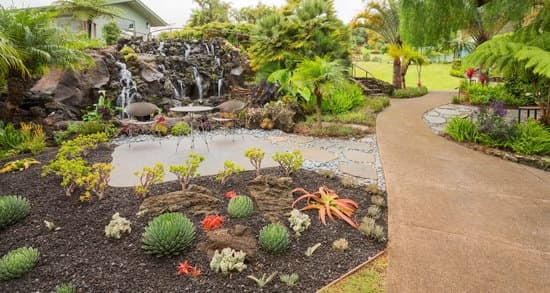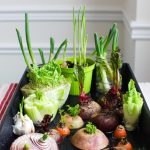Are you looking for gardening ideas vegetables to start your own vegetable garden? Vegetable gardening can be a rewarding and enjoyable hobby that provides fresh, nutritious produce for your family. Whether you have a large backyard or a small balcony, there are plenty of options for growing your own vegetables. In this article, we will explore the basics of vegetable gardening and provide tips and techniques for getting started.
Vegetable gardening is a great way to enjoy the outdoors, get some exercise, and connect with nature. Whether you’re a beginner or an experienced gardener, there’s always something new to learn and experiment with in the world of vegetable gardening. From choosing the right location for your garden to understanding soil preparation and fertilization, we’ll cover everything you need to know to get started on the right foot.
In addition to providing fresh produce, vegetable gardening is also a great way to save money on groceries and reduce your carbon footprint. By growing your own vegetables, you can ensure that they are free from harmful pesticides and chemicals. Plus, there’s nothing quite like the satisfaction of harvesting your own delicious tomatoes, peppers, carrots, and more straight from your garden. So let’s dive in and explore the wonderful world of vegetable gardening.
Choosing the Right Location for Your Vegetable Garden
When it comes to vegetable gardening, choosing the right location for your garden is crucial for the success of your plants. The ideal location for a vegetable garden is one that receives at least 6-8 hours of sunlight per day. This ensures that your vegetables get the energy they need to grow and produce a bountiful yield. Additionally, a good location should have access to water and be protected from strong winds.
Considerations for Location
Before choosing a location for your vegetable garden, consider the proximity to your home, as well as convenience for regular maintenance and harvesting. It’s also important to take into account the quality of the soil in your chosen spot. Conducting a soil test can help you determine if amendments are needed to ensure optimal growing conditions for your vegetables.
Container Gardening
If you have limited space or poor soil quality in your yard, container gardening can be a great alternative. You can place containers on balconies, patios, or even windowsills, allowing you to grow vegetables in small spaces or areas with less than ideal soil conditions. Many vegetables can thrive in containers, such as tomatoes, peppers, lettuce, and herbs. Container gardening also allows for easier pest control and protection from inclement weather.
Choosing the right location for your vegetable garden is essential in ensuring a successful harvest. By considering factors such as sunlight exposure, water access, and soil quality, as well as exploring options like container gardening for small spaces, you can create an ideal environment for your vegetables to thrive.
Understanding Soil Preparation and Fertilization
When it comes to vegetable gardening, the foundation of a successful garden lies in the soil. Proper soil preparation and fertilization are crucial for creating a nutrient-rich environment in which your vegetables can thrive. Here are some important aspects to consider when understanding soil preparation and fertilization for your vegetable garden:
1. Testing Your Soil: Before you start planting, it’s essential to test your soil to determine its pH level and nutrient content. You can do this by using a DIY home testing kit or by sending a sample to a professional laboratory for analysis. Understanding the composition of your soil will help you make informed decisions about the types of fertilizers and soil amendments needed.
2. Adding Organic Matter: Incorporating organic matter such as compost, well-rotted manure, or leaf mold into your soil is essential for improving its structure and fertility. Organic matter helps retain moisture, improves drainage, and provides essential nutrients to support healthy plant growth.
3. Choosing the Right Fertilizer: Once you understand the nutrient needs of your soil, you can select the appropriate fertilizer to supplement any deficiencies. There are various types of fertilizers available, including organic options such as fish emulsion, bone meal, and seaweed extracts, as well as synthetic fertilizers with specific nutrient ratios for different vegetables.
By following these soil preparation and fertilization practices, you can create an optimal growing environment for your vegetable garden. Taking the time to understand your soil’s needs and providing necessary amendments will ultimately lead to a bountiful harvest of fresh, nutritious vegetables.
Remember that proper care must be taken when preparing the garden bed so that when it comes time to plant that new turnaround begins Now. With this approach in mind those home grown tomatoes will really taste special.
Selecting the Best Vegetables for Your Garden
When it comes to selecting the best vegetables for your garden, it’s important to consider several factors such as your location, climate, available space, and personal preferences. Different vegetables thrive in different conditions, so it’s crucial to choose varieties that are well-suited to your specific gardening environment. Here are some top picks for beginner gardeners and seasoned green thumbs alike:
- Tomatoes: Tomatoes are a popular choice for many vegetable gardeners due to their versatility and delicious taste. They can be grown in containers or directly in the ground, making them a great option for gardens of all sizes.
- Carrots: Carrots are a low-maintenance root vegetable that can be easily grown from seed. They prefer well-drained soil and plenty of sunlight, making them a great addition to any vegetable garden.
- Spinach: This leafy green vegetable is packed with nutrients and can be harvested multiple times throughout the growing season. It thrives in cooler weather, making it an ideal choice for spring and fall planting.
- Zucchini: Zucchini plants produce high yields and are relatively easy to grow, making them a great choice for beginners. They also take up quite a bit of space, so be sure to plan accordingly when planting.
In addition to these popular options, there are countless other vegetables to consider for your garden. Be sure to research the specific needs of each plant before making your selections, taking into account factors such as sunlight requirements, space limitations, and potential pest or disease issues. By choosing the right vegetables for your garden, you’ll set yourself up for a successful growing season full of delicious homegrown produce.
Remember that experimentation is part of the fun of gardening – don’t be afraid to try new varieties or exotic options that pique your interest. Whether you have a spacious backyard or just a small balcony, there are plenty of gardening ideas vegetables that can fit into your plan and bring joy to your plate. With careful consideration and planning, you can create a bountiful vegetable garden that meets your needs and provides fresh produce all season long.
Planting and Sowing Techniques for Different Vegetables
When it comes to planting and sowing techniques for different vegetables, it’s important to understand that not all veggies are the same. Each type of vegetable has its own specific requirements when it comes to planting and sowing.
For root vegetables such as carrots, beets, and radishes, it’s important to ensure that the soil is loose and well-drained to allow the roots to properly develop. These vegetables should be directly sown into the ground rather than transplanted.
On the other hand, vegetables like tomatoes, peppers, and eggplants are best started from seeds indoors before being transplanted into the garden once the threat of frost has passed. These warm-season vegetables require a longer growing season which can be achieved by starting them indoors.
Leafy greens like lettuce, spinach, and kale prefer cooler temperatures and can be directly sown into the garden in early spring or late summer for a fall harvest.
| Veggie Type | Planting/Sowing Technique |
|---|---|
| Root Vegetables (carrots, beets) | Direct sow into loose, well-drained soil |
| Warm-season Vegetables (tomatoes, peppers) | Start from seeds indoors before transplanting |
| Leafy Greens (lettuce, spinach) | Direct sow in early spring or late summer |
By understanding the specific needs of each type of vegetable you plan to grow in your garden, you can increase your chances of a successful harvest. With this knowledge in mind, you’ll be able to plant and sow your vegetable garden with confidence and set yourself up for a bountiful yield.
Pest and Disease Management in Vegetable Gardening
One of the biggest challenges that vegetable gardeners face is dealing with pests and diseases that can wreak havoc on their crops. There are a variety of insects, animals, and diseases that can threaten the health of your vegetable garden, but with the right knowledge and techniques, you can effectively manage these issues without relying on harmful chemical pesticides.
To start, it’s important to practice good gardening hygiene to prevent the spread of pests and diseases. This includes regularly removing any dead or diseased plants, keeping your tools clean, and rotating your crops to reduce the build-up of pests and diseases in the soil. Additionally, choosing disease-resistant varieties of vegetables can also help minimize the risk of infection.
Another effective method for managing pests in your vegetable garden is through companion planting. Certain plants have natural properties that repel insects or attract beneficial predators that feed on garden pests. For example, planting marigolds around your vegetable garden can deter nematodes and other harmful insects.
Furthermore, utilizing organic pest control methods such as neem oil, diatomaceous earth, or homemade insecticidal soaps can help keep pest populations at bay without harming beneficial insects or contaminating your vegetables with harsh chemicals.
| Pest/Disease Management | Technique |
|---|---|
| Companion Planting | Planting marigolds to deter nematodes and harmful insects |
| Organic Pest Control | Using neem oil, diatomaceous earth, or homemade insecticidal soaps |
| Gardening Hygiene | Regularly removing dead or diseased plants and rotating crops |
Tips for Watering and Maintaining Your Vegetable Garden
Watering and maintaining your vegetable garden is crucial to the success of your harvest. Proper watering techniques and regular maintenance are key to keeping your plants healthy and productive. Here are some tips to help you keep your vegetable garden thriving.
First, it’s important to water your vegetable garden at the right time of day. Early morning is the best time to water, as this allows the plants to absorb moisture before the heat of the day evaporates it. Avoid watering in the evening, as damp foliage overnight can lead to disease and pests.
When it comes to watering frequency, it’s essential to find a balance. Overwatering can lead to root rot and other issues, while underwatering can result in stunted growth and poor yield. The specific watering needs of your garden will depend on factors such as climate, soil type, and the types of vegetables you are growing.
In addition to proper watering, maintaining your vegetable garden also involves regular weeding, pruning, and fertilizing. Weeds can compete with your vegetables for nutrients and water, so it’s important to keep them at bay. Pruning helps improve air circulation and prevents overcrowding, while fertilizing provides essential nutrients for healthy plant growth. By staying on top of these maintenance tasks, you can ensure a thriving vegetable garden that yields a bountiful harvest.
Harvesting and Preserving Your Vegetable Yield
Once your vegetables have grown and matured, it’s time to harvest and preserve your hard-earned yield. Proper harvesting techniques and preservation methods can ensure that you get to enjoy the fruits of your labor for longer periods of time.
Harvesting at the Right Time
Knowing when to harvest your vegetables is key to getting the best flavor and nutritional value. Different vegetables have different indicators of ripeness, such as color, size, and firmness. For example, tomatoes should be harvested when they are fully colored and slightly soft to the touch, while carrots are best harvested when they are bright orange and at least half an inch in diameter. Understanding these indicators will help you know when each vegetable is ready for picking.
Preservation Techniques
Once you have harvested your vegetables, it’s important to preserve them properly to extend their shelf life. There are several methods for preserving vegetables including canning, freezing, pickling, and drying. Canning is a great way to preserve high-acid vegetables like tomatoes, while freezing works well for most vegetables as it helps retain their nutrients and flavor.
Pickling is a popular method for preserving cucumbers, peppers, and other hardy vegetables. Lastly, drying or dehydrating vegetables is an effective way to preserve them for long-term storage.
Storing Your Harvest
After preserving your vegetables, it’s important to store them properly to maintain their quality. Most fresh vegetables should be stored in the refrigerator or a cool, dark place. Root crops like potatoes and onions should be stored in a cool, dry area with good air circulation. As for preserved vegetables, make sure they are stored in airtight containers or vacuum-sealed bags to prevent spoilage.
From harvesting techniques to preservation methods, ensuring that you take the necessary steps to protect your vegetable yield will allow you to enjoy the flavors of your garden’s bounty throughout the year. Whether storing fresh produce in your fridge or experimenting with pickling recipes for long-term preservation options – there are plenty of ways to keep those delicious homegrown veggies around all year long.
Creative and Innovative Gardening Ideas for Small Spaces
Having a small backyard or limited outdoor space doesn’t mean you can’t enjoy the benefits of vegetable gardening. In fact, there are many creative and innovative gardening ideas for small spaces that can help you maximize your available area and still grow a bountiful harvest of vegetables.
One popular option is vertical gardening, which involves growing plants on a vertical surface such as a trellis, wall, or fence. This technique not only saves space but also adds an attractive visual element to your garden.
In addition to vertical gardening, container gardening is another fantastic option for small spaces. You can use various containers such as pots, buckets, hanging baskets, or even recycled items like old tires or crates to grow a wide range of vegetables.
This allows you to position your plants in the best possible light and provides flexibility in moving them around as needed. Furthermore, raised bed gardening is also an excellent choice for small spaces, as it offers better soil drainage and prevents soil compaction while allowing for intensive planting.
If you have limited outdoor space, consider incorporating edible landscaping into your overall garden design. This involves integrating edible plants with ornamental ones throughout your landscape. By doing so, you can transform ordinary flowerbeds into vibrant vegetable gardens that not only provide food but also enhance the aesthetic appeal of your outdoor space.
With these creative and innovative gardening ideas for small spaces, anyone can experience the joys of vegetable gardening regardless of their limitations in area. Whether it’s through vertical gardening, container gardening, raised bed gardening, or edible landscaping, there are plenty of ways to grow an abundance of fresh produce even with limited space available.
Conclusion
In conclusion, the possibilities for gardening ideas vegetables are endless, and starting your own vegetable garden can be a rewarding and fulfilling experience. As you have learned from this article, there are many factors to consider when planning and maintaining a successful vegetable garden. From choosing the right location and preparing the soil to understanding planting techniques and managing pests and diseases, vegetable gardening requires dedication and knowledge.
By following the tips provided in this article, you can create a thriving garden that will provide you with fresh, nutritious produce. Whether you have a large backyard or limited space, there are creative and innovative gardening ideas that can be tailored to meet your specific needs. With proper care and maintenance, your vegetable garden can yield a bountiful harvest that can be preserved for future use.
So why not take the plunge and start your own vegetable garden today? Not only will you enjoy the benefits of having access to fresh, organic produce, but you will also gain a deeper appreciation for nature’s cycles and the satisfaction of growing your own food. We encourage our readers to embrace the joys of gardening and experience firsthand the many rewards it has to offer. Happy gardening.
Frequently Asked Questions
What Is the Best Layout for a Vegetable Garden?
The best layout for a vegetable garden depends on factors like the size of the space, sunlight exposure, and the type of vegetables you want to grow. Generally, it’s good to arrange plants in rows or blocks for easy access and maintenance.
What Are Some Garden Veggies Ideas?
When it comes to garden veggies ideas, there are countless options to consider. Some popular choices include tomatoes, peppers, carrots, lettuce, cucumbers, zucchini, spinach, radishes, and green beans. It’s important to choose veggies that thrive in your specific climate and growing conditions.
What Are the 10 Easiest Vegetables to Grow?
If you’re new to gardening or simply want low-maintenance vegetables, consider growing tomatoes, cucumbers, lettuce, radishes, zucchini, green beans, carrots, peas, peppers, and spinach. These are generally considered some of the easiest vegetables for beginners to grow successfully.

Welcome to my gardening blog! I am passionate about plants and enjoy sharing my knowledge and experiences with others. In this blog, I will write about everything related to gardening, from tips on how to get started to updates on my own garden projects.





